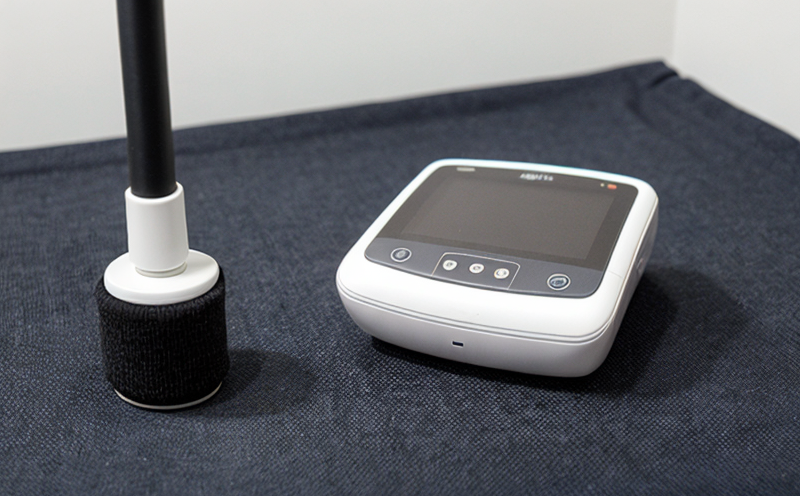ISO 14184 Determination of formaldehyde in functional fabrics
The determination of formaldehyde in functional fabrics is a critical aspect of quality assurance and compliance, especially for sectors like fashion, home textiles, and healthcare. Formaldehyde is commonly used as a finish to impart various functionalities such as wrinkle resistance, anti-crease properties, and enhanced durability. However, it can also pose health risks if not controlled properly.
The ISO 14184 standard provides a standardized method for the quantitative determination of free and releasable formaldehyde in functional fabrics using an amine reagent based on the hydrolysis reaction. This test is particularly important for ensuring compliance with global regulatory frameworks such as REACH, Oeko-Tex Standard 100, and many national standards.
The testing process involves several key steps: sample preparation, hydrolysis of formaldehyde, and detection using a spectrophotometric or potentiometric titration method. Sample preparation is crucial to ensure accurate results, and this requires precise cutting and conditioning of the fabric specimens according to ISO 14184 guidelines.
The apparatus required for this test includes a water bath for hydrolysis, a spectrophotometer or pH meter for detection, and various reagents such as aqueous ammonia solution. The acceptance criteria are based on the concentration limits set by relevant standards, which can vary depending on the intended use of the fabric.
The real-world application of this testing method is widespread across the textile industry. For instance, in the fashion sector, it ensures that garments meet safety and quality standards before being sold to consumers. In home textiles, it helps manufacturers comply with indoor air quality regulations. The healthcare sector benefits from ensuring patient safety by using fabrics that do not release harmful levels of formaldehyde.
Understanding the parameters involved is essential for accurate testing. These include temperature control during hydrolysis, pH adjustment, and time intervals between sample preparation and analysis. Additionally, the choice of reagents can significantly impact the accuracy of results, so it's important to use high-quality reagents that meet international standards.
Sampling protocols are also critical in ensuring reliable test outcomes. Samples should be representative of the entire batch or production run to avoid misleading results. Proper storage conditions and handling procedures further contribute to accurate testing results.
| Sample Preparation | Hydrolysis Conditions | Detection Method |
|---|---|---|
| Cutting fabric into appropriate sizes, conditioning at specific relative humidity and temperature. | Hydrolysis in a water bath at 37°C for 24 hours. | Spectrophotometry or potentiometric titration of hydrolyzed solution with aqueous ammonia. |
The testing process not only ensures product safety but also enhances brand reputation by demonstrating a commitment to quality and sustainability. By adhering to ISO 14184, textile manufacturers can gain a competitive edge in the market while ensuring consumer trust.
In summary, the determination of formaldehyde in functional fabrics using ISO 14184 is a vital step in the quality assurance process. It helps ensure compliance with international standards and regulations, thereby protecting consumers from potential health risks associated with high levels of formaldehyde exposure.
Industry Applications
- Fashion industry: Ensuring safety for end-consumers by meeting REACH and Oeko-Tex Standard 100.
- Home textiles: Compliance with indoor air quality regulations to enhance consumer comfort and health.
- Healthcare sector: Patient safety through the use of fabrics that do not release harmful levels of formaldehyde.
The ISO 14184 standard is widely applicable across various sectors, making it a cornerstone in textile testing. Its robust framework ensures that functional textiles meet both quality and regulatory standards.
Eurolab Advantages
At Eurolab, we are committed to providing accurate, reliable, and compliant services for textile testing. Our state-of-the-art facilities and experienced staff ensure that all tests conducted meet the highest standards.
- Precision instrumentation: We use the latest equipment to conduct precise measurements.
- Comprehensive expertise: Our team of experts has extensive experience in various aspects of textile testing.
- ISO 14184 compliance: Our procedures are meticulously designed to adhere strictly to ISO standards.
- Customer satisfaction: We prioritize customer needs and deliver results that meet or exceed expectations.
We pride ourselves on offering a seamless service experience, from initial consultation to final report. Our commitment to quality and reliability is unmatched in the industry.
Environmental and Sustainability Contributions
The determination of formaldehyde in functional fabrics using ISO 14184 not only ensures product safety but also contributes positively to environmental sustainability. By adhering to strict standards, manufacturers can reduce the risk of releasing harmful substances into the environment.
This testing process helps in minimizing waste by ensuring that only safe and compliant products reach the market. It promotes the use of sustainable practices throughout the production chain, from raw material selection to final product disposal.
Moreover, compliance with ISO 14184 fosters a culture of responsibility among manufacturers, encouraging them to adopt greener technologies and processes. This contributes to a more sustainable textile industry that is mindful of its environmental impact.





